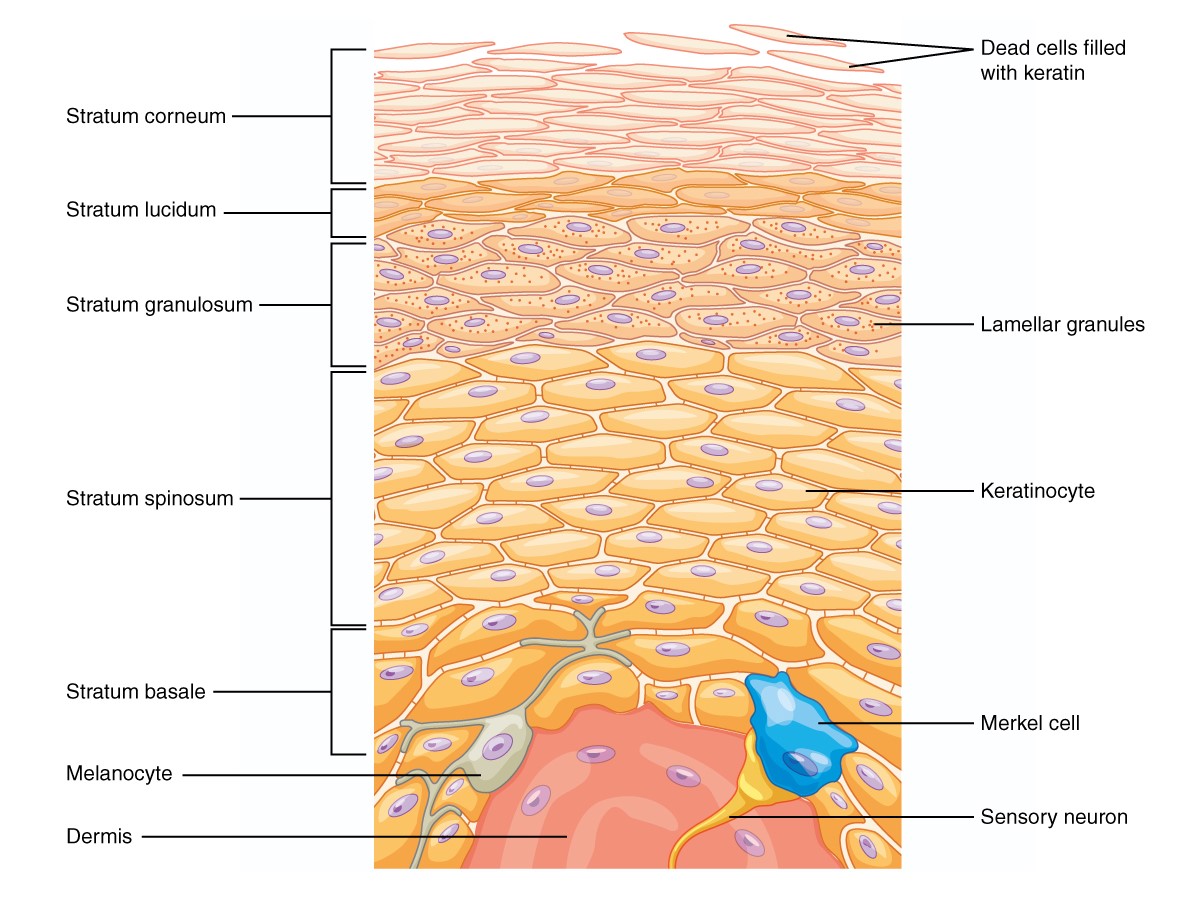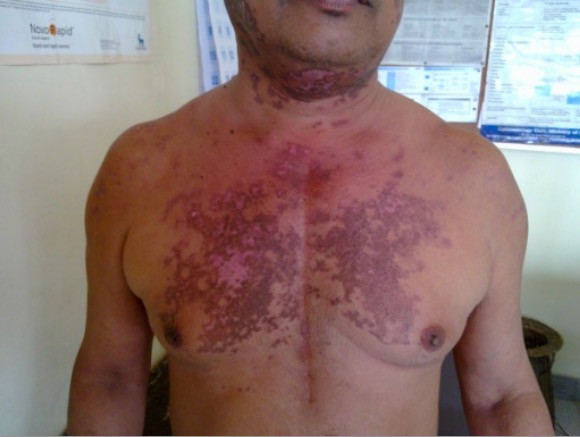Playlist
Show Playlist
Hide Playlist
Lupus Erythematosus
-
Slides Dermatology Inflammatory Skin Diseases.pdf
-
Reference List Pathology.pdf
-
Download Lecture Overview
00:02 Let’s talk about lupus erythematosus, or systemic lupus erythematosus. 00:07 Now, this will come under three categories, so it is important that you pay attention to the organization of your lupus dermatology. 00:15 Three categories of cutaneous lupus. 00:18 Cutaneous lupus is my topic, clear? We’re not going to do the full systemic here. 00:23 Dermatology. 00:25 Acute SLE, this is the one that you’re oh so familiar with with the malar butterfly rash. 00:32 Is it affecting nasolabial type of region right here, the SLE? No, it does not. 00:38 That’s important. 00:40 You have another type. 00:41 Under cutaneous lupus is this called subacute lupus erythematosus. 00:48 It’s annular erythematous, and then it will be located on the sun exposed skin. 00:57 Often involves the arms and the neck because of exposure to the sun. 01:01 Associated with -- Please, make sure you memorize anti-Ro, which is SSA antibody. 01:07 The last time you’ve seen this was your Sjogren, wasn’t it? You saw SSB, which is your anti-La, and SSA, which is anti-Ro. 01:18 Memorize these. 01:20 May be caused by thiazides or other meds. 01:23 We’re referring to subacute lupus erythematosus. 01:27 What’s my topic? Cutaneous lupus erythematosus. 01:32 So far, we looked at two categories: acute and subacute. 01:37 What do you think is left? Voila! Chronic. 01:41 So, chronic cutaneous lupus erythematosus. 01:44 What’s my behavior here? Depigmentation, indurated or scarred plaques; chronic, chronic, chronic. 01:51 Surrounding hyperpigmenting or hyperpigmentation. 01:56 Most often affects the face and the scalp. 01:58 And has a prediliction for African-American women being most commonly affected. 02:04 My topic is cutaneous lupus erythematosus. 02:07 There are three categories. 02:08 The acute is the one that you’re quite familiar with with the butterfly malar rash. 02:12 Number two is the subacute, and number three would be the chronic. 02:19 If you'd notice here, on your left is acute systemic lupus erythematosus. 02:25 You have that beautiful butterfly rash. 02:26 We call this malar or should I say the characteristic. 02:30 You’ll notice here that the nasolabial margin or fold has been spared. 02:36 Then we have the subacute cutaneous lupus erythematosus, which is the middle picture. 02:42 And here, you’ll notice the sun exposed areas, either it’d be the arm, maybe the chest in this particular patient. 02:49 And finally, you have your chronic cutaneous lupus erythematosus. 02:53 This is the one in which -- please take a look at the scalp of this patient, and you’ll notice that there is deep pigmentation surrounded by areas that are hyperpigmented, or maybe perhaps, erythematosus. 03:05 Where else would you find this? Maybe perhaps, on your face. 03:08 Most commonly, with chronic, it would be which population? An African-American lady. 03:17 Other: The malar rash is present with SLE. 03:21 The subacute type of cutaneous lupus erythematosus may have systemic complications, and the chronic has systemic complications. 03:31 A small percentage of the time as well. 03:33 Here’s my acute, subacute, and chronic, all in terms of percentage of systemic involvement. 03:44 Management: Evaluation of systemic disease. 03:48 Always suspect lupus erythematosus. 03:51 You want to make sure that the systemic organs are doing okay. 03:55 Referral to a dermatologist or rheumatologist. 03:58 We have steroids, and maybe perhaps, antimalarials, and sun protection, all being possible measures of management of lupus erythematosus.
About the Lecture
The lecture Lupus Erythematosus by Carlo Raj, MD is from the course Inflammatory Skin Diseases.
Included Quiz Questions
A 36-year-old woman presents with a four-month history of a non-pruritic rash on the chest and arms that worsens with sun exposure. On examination, there is no other rash, oral ulcers, or other significant findings. Labs show no abnormal results except positive ANA and anti-Ro/SSA antibodies. What is the most likely diagnosis?
- Subacute cutaneous lupus erythematosus
- Erythema multiforme
- Systemic lupus erythematosus
- Psoriasis
- Pemphigus vulgaris
A 27-year-old woman presents with fatigue and symmetric polyarthritis. A malar rash is present, and laboratory studies are positive for antinuclear antibodies and anti-double-strand DNA. Which of the following class of medications is commonly used in the treatment of this condition?
- Antimalarials
- Antibiotics
- Antifungals
- Antihistamines
- Antidiarrheals
Customer reviews
5,0 of 5 stars
| 5 Stars |
|
5 |
| 4 Stars |
|
0 |
| 3 Stars |
|
0 |
| 2 Stars |
|
0 |
| 1 Star |
|
0 |





